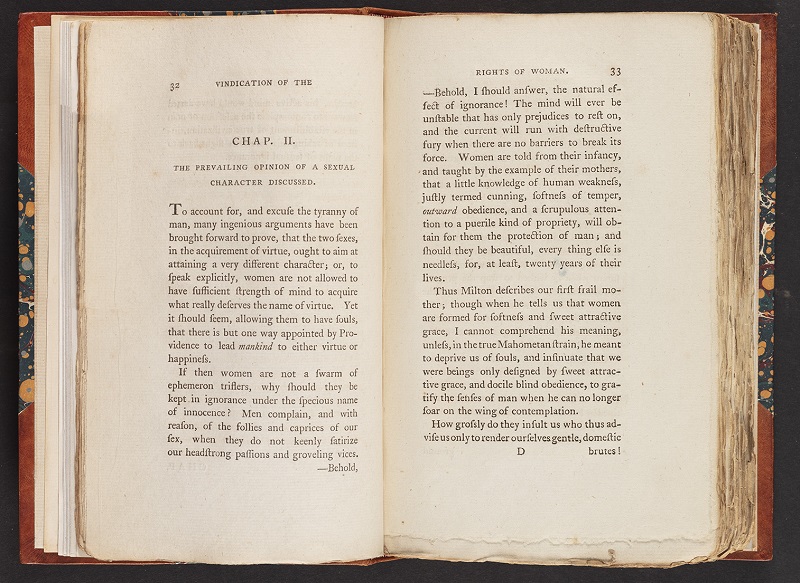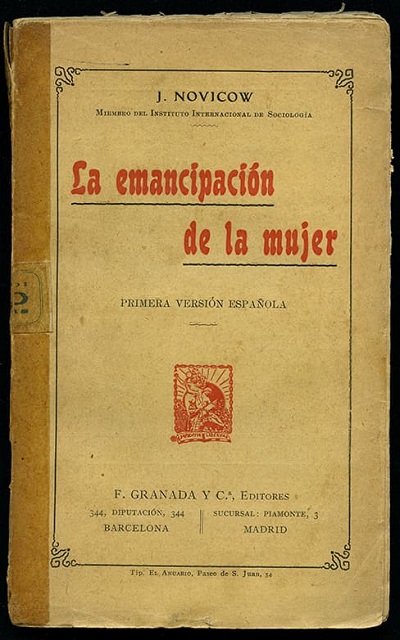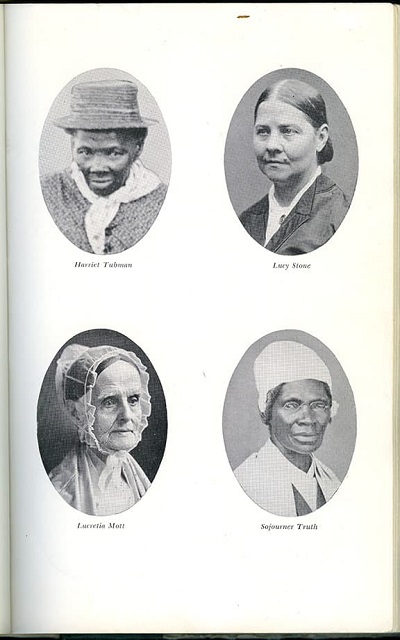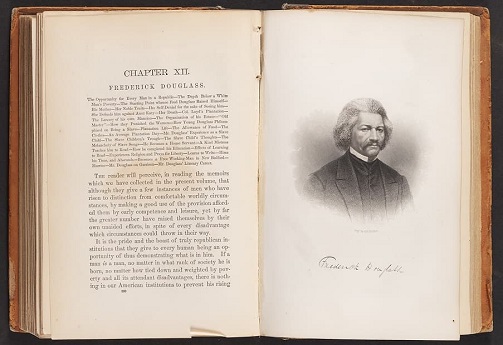
Beginnings in the United States
Though the women’s suffrage movement in the United States is typically traced back to the Seneca
Falls Convention in 1848, it was influenced by women’s rights discussions already happening.
More than fifty years before Seneca Falls, British author Mary Wollstonecraft wrote and published
Vindication of the rights of women (1792) which circulated internationally, including in the United
States. Considered the first feminist text, in it, Wollstonecraft argues for equal education of women
and men so women could support themselves.
Elizabeth Cady Stanton, inspired by women in Britain, first introduced the right to vote as part of
women’s demands for equality at the Seneca Falls Convention. Afterwards, the right to vote became
key to many women’s rights conventions in the United States and inspired and drew support from
women around the world.
Falls Convention in 1848, it was influenced by women’s rights discussions already happening.
More than fifty years before Seneca Falls, British author Mary Wollstonecraft wrote and published
Vindication of the rights of women (1792) which circulated internationally, including in the United
States. Considered the first feminist text, in it, Wollstonecraft argues for equal education of women
and men so women could support themselves.
Elizabeth Cady Stanton, inspired by women in Britain, first introduced the right to vote as part of
women’s demands for equality at the Seneca Falls Convention. Afterwards, the right to vote became
key to many women’s rights conventions in the United States and inspired and drew support from
women around the world.

Beginnings in the United States


A vindication of the rights of woman: With strictures on political and moral subjects, 1792
Krannert Special Collection (Historic), 305.4 W834v
Description
Krannert Special Collection (Historic), 305.4 W834v
Description
In this passage, Wollstonecraft argues for women's
education, stating that women would not have been
given souls if they were meant to remain ignorant and simpy serve "to gratify the senses of man... How
grossly do they insult us who thus advise us only to render ourselves gentle, domestic brutes!"
given souls if they were meant to remain ignorant and simpy serve "to gratify the senses of man... How
grossly do they insult us who thus advise us only to render ourselves gentle, domestic brutes!"

Beginnings in the United States

Electoral disabilities of women, 1871
Collection of materials related to Clara Adams,
Marian Anderson, and women's rights, 20190522
Description
Collection of materials related to Clara Adams,
Marian Anderson, and women's rights, 20190522
Description

Publications from England and Spain about women's rights and suffrage. In the 1890's Millicent Garrett
Fawcett, author of Electoral disabilities of women, became a key leader in the British suffrage movement
and led suffrage societies, demonstrations, and marches.
Fawcett, author of Electoral disabilities of women, became a key leader in the British suffrage movement
and led suffrage societies, demonstrations, and marches.

Beginnings in the United States
The women’s suffrage movement built on the work of abolitionists, using many of the
same tactics to garner support for their cause. As such, many well-known suffragists
were also active in the abolition movement, such as Lucy Stone, Lucretia Mott, Sojourner
Truth, Susan B. Anthony, Elizabeth Cady Stanton, and Frederick Douglass.
However, this did not prevent racism or prejudice. After women were excluded
from the 14th and 15th constitutional amendments (1868; 1870) granting African American
men citizenship and voting rights, Anthony and Stanton, national leaders in the suffrage
movement, employed racist rhetoric to gain support for their cause. Many white suffragists
similarly excluded African Americans from organizations, conventions, and protests to
appease Southern suffragists and politicians. This, in addition to differing opinions as
to whether women should advocate for state or federal amendments, caused rifts within
the suffrage movement.
same tactics to garner support for their cause. As such, many well-known suffragists
were also active in the abolition movement, such as Lucy Stone, Lucretia Mott, Sojourner
Truth, Susan B. Anthony, Elizabeth Cady Stanton, and Frederick Douglass.
However, this did not prevent racism or prejudice. After women were excluded
from the 14th and 15th constitutional amendments (1868; 1870) granting African American
men citizenship and voting rights, Anthony and Stanton, national leaders in the suffrage
movement, employed racist rhetoric to gain support for their cause. Many white suffragists
similarly excluded African Americans from organizations, conventions, and protests to
appease Southern suffragists and politicians. This, in addition to differing opinions as
to whether women should advocate for state or federal amendments, caused rifts within
the suffrage movement.

Beginnings in the United States

Century of struggle; the woman's rights movement in the United States, 1959
General Rare Collection, 324.3 F639c
Description
General Rare Collection, 324.3 F639c
Description
Early women abolitionists and suffragists. Truth,
Stone, and Mott all attended the first National
Women’s Rights Convention held in Worcester,
Massachusetts in 1850.
Stone, and Mott all attended the first National
Women’s Rights Convention held in Worcester,
Massachusetts in 1850.

Beginnings in the United States

Men of our times: Or, Leading patriots of the day, 1868
General Rare Collection, 923 St7
Description
General Rare Collection, 923 St7
Description
Frederick Douglass, abolition leader
and women's suffrage supporter,
called the abolition movement a
"peculiarly woman's cause" since
women, like African Americans,
were also fighting for basic rights.
and women's suffrage supporter,
called the abolition movement a
"peculiarly woman's cause" since
women, like African Americans,
were also fighting for basic rights.